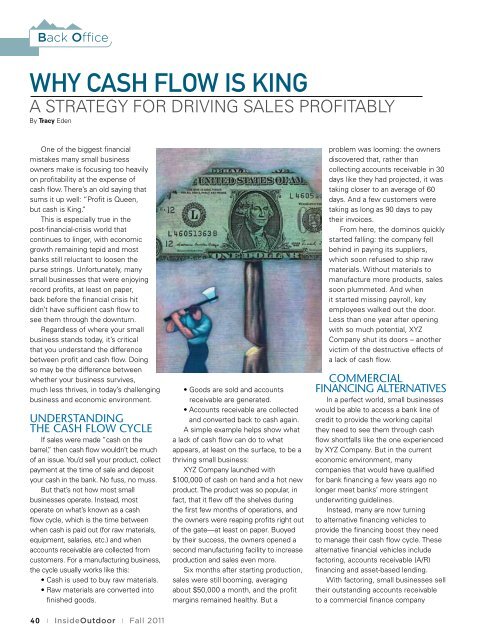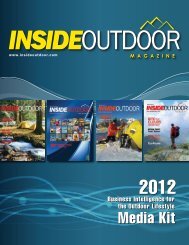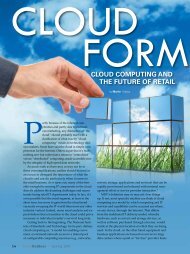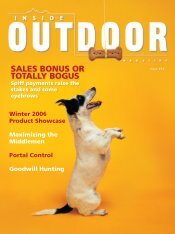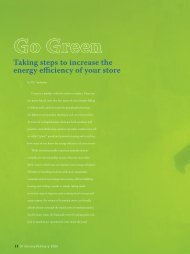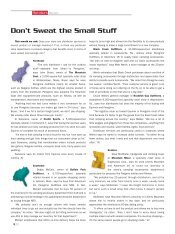Fall - InsideOutdoor Magazine
Fall - InsideOutdoor Magazine
Fall - InsideOutdoor Magazine
You also want an ePaper? Increase the reach of your titles
YUMPU automatically turns print PDFs into web optimized ePapers that Google loves.
Back Office<br />
Why Cash Flow is King<br />
A strategy for driving sales profitably<br />
By Tracy Eden<br />
One of the biggest financial<br />
mistakes many small business<br />
owners make is focusing too heavily<br />
on profitability at the expense of<br />
cash flow. There’s an old saying that<br />
sums it up well: “Profit is Queen,<br />
but cash is King.”<br />
This is especially true in the<br />
post-financial-crisis world that<br />
continues to linger, with economic<br />
growth remaining tepid and most<br />
banks still reluctant to loosen the<br />
purse strings. Unfortunately, many<br />
small businesses that were enjoying<br />
record profits, at least on paper,<br />
back before the financial crisis hit<br />
didn’t have sufficient cash flow to<br />
see them through the downturn.<br />
Regardless of where your small<br />
business stands today, it’s critical<br />
that you understand the difference<br />
between profit and cash flow. Doing<br />
so may be the difference between<br />
whether your business survives,<br />
much less thrives, in today’s challenging<br />
business and economic environment.<br />
Understanding<br />
the Cash Flow Cycle<br />
If sales were made “cash on the<br />
barrel,” then cash flow wouldn’t be much<br />
of an issue. You’d sell your product, collect<br />
payment at the time of sale and deposit<br />
your cash in the bank. No fuss, no muss.<br />
But that’s not how most small<br />
businesses operate. Instead, most<br />
operate on what’s known as a cash<br />
flow cycle, which is the time between<br />
when cash is paid out (for raw materials,<br />
equipment, salaries, etc.) and when<br />
accounts receivable are collected from<br />
customers. For a manufacturing business,<br />
the cycle usually works like this:<br />
• Cash is used to buy raw materials.<br />
• Raw materials are converted into<br />
finished goods.<br />
40 | <strong>InsideOutdoor</strong> | <strong>Fall</strong> 2011<br />
• Goods are sold and accounts<br />
receivable are generated.<br />
• Accounts receivable are collected<br />
and converted back to cash again.<br />
A simple example helps show what<br />
a lack of cash flow can do to what<br />
appears, at least on the surface, to be a<br />
thriving small business:<br />
XYZ Company launched with<br />
$100,000 of cash on hand and a hot new<br />
product. The product was so popular, in<br />
fact, that it flew off the shelves during<br />
the first few months of operations, and<br />
the owners were reaping profits right out<br />
of the gate—at least on paper. Buoyed<br />
by their success, the owners opened a<br />
second manufacturing facility to increase<br />
production and sales even more.<br />
Six months after starting production,<br />
sales were still booming, averaging<br />
about $50,000 a month, and the profit<br />
margins remained healthy. But a<br />
problem was looming: the owners<br />
discovered that, rather than<br />
collecting accounts receivable in 30<br />
days like they had projected, it was<br />
taking closer to an average of 60<br />
days. And a few customers were<br />
taking as long as 90 days to pay<br />
their invoices.<br />
From here, the dominos quickly<br />
started falling: the company fell<br />
behind in paying its suppliers,<br />
which soon refused to ship raw<br />
materials. Without materials to<br />
manufacture more products, sales<br />
soon plummeted. And when<br />
it started missing payroll, key<br />
employees walked out the door.<br />
Less than one year after opening<br />
with so much potential, XYZ<br />
Company shut its doors – another<br />
victim of the destructive effects of<br />
a lack of cash flow.<br />
Commercial<br />
Financing Alternatives<br />
In a perfect world, small businesses<br />
would be able to access a bank line of<br />
credit to provide the working capital<br />
they need to see them through cash<br />
flow shortfalls like the one experienced<br />
by XYZ Company. But in the current<br />
economic environment, many<br />
companies that would have qualified<br />
for bank financing a few years ago no<br />
longer meet banks’ more stringent<br />
underwriting guidelines.<br />
Instead, many are now turning<br />
to alternative financing vehicles to<br />
provide the financing boost they need<br />
to manage their cash flow cycle. These<br />
alternative financial vehicles include<br />
factoring, accounts receivable (A/R)<br />
financing and asset-based lending.<br />
With factoring, small businesses sell<br />
their outstanding accounts receivable<br />
to a commercial finance company


